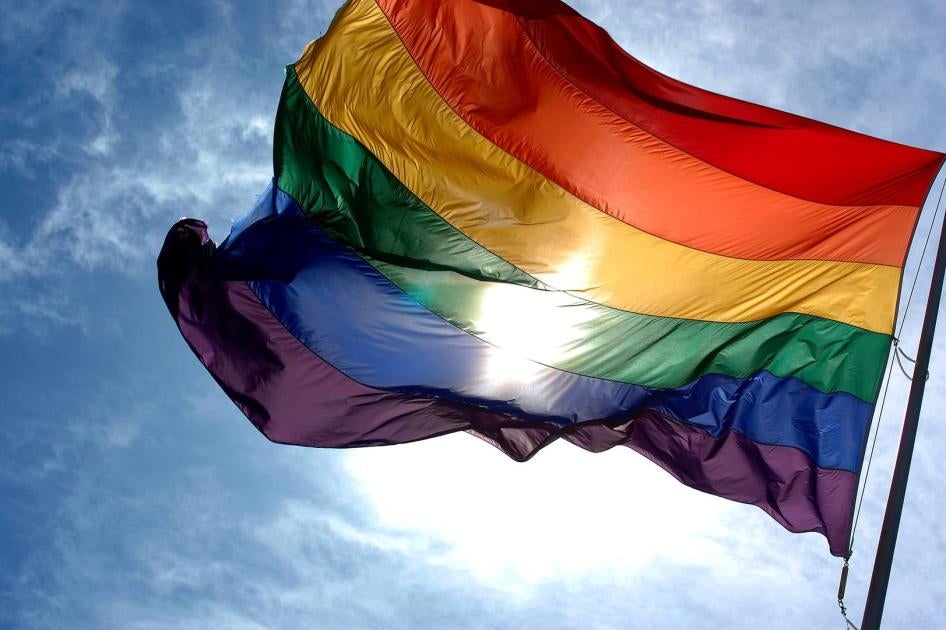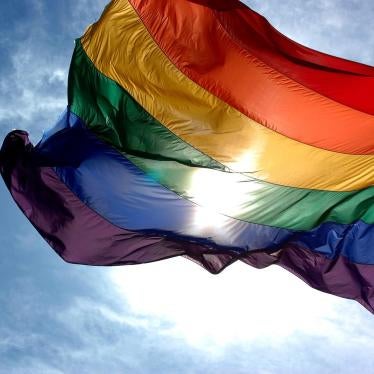Dana Zzymm, an intersex and nonbinary US citizen, has been on a years-long quest to obtain a passport that reflects their identity by using a non-binary “X” marker in lieu of the typical “F” or “M.” They sued to compel the US State Department to issue them such a passport and won in federal court, but on May 12 an appeals court issued an inconclusive ruling, leaving them still waiting.
The State Department advanced five reasons for being unwilling to issue the passport. The appeals court for the 10th Circuit found that three of the five reasons were “arbitrary and capricious.” It reversed the lower court’s ruling, though, and ordered the department to reevaluate Zzymm’s case based on the other two justifications.
The ruling is a setback but offers hope that Zzymm will one day receive a passport matching their identity – something that most people take for granted.
Intersex people, like Zzymm, make up about 1.7 percent of the population. They are born with chromosomes, gonads, sex organs, or genitalia that differ from those seen as typical for girls or boys. Almost all are assigned a female or male sex marker at birth – Dana Zzymm’s birth certificate, which lists their sex as “unknown,” is unusual – and many intersex people embrace a female or male gender identity.
But a movement to introduce non-binary sex or gender markers has gathered steam, in large part due to courts recognizing that some intersex people may not be accounted for within a strict binary. Alex McFarlane from Australia was the first person known to have acquired a non-binary document. MacFarlane’s sex at birth had been recorded as “indeterminate – also known as intersex.” An Australian court ruled in 2003 that MacFarlane had the right to a corresponding passport, with an “X” designation. In 2018 the Netherlands issued an X passport to Leonne Zeegers, who is intersex, after a two-year court battle.
The 2018 US federal court decision in support of Dana Zzymm made clear its ruling only applied to Zzymm, based on medical records attesting to their intersex condition. The judge, accepting Zzymm’s argument that their “accurate” sex was intersex, opined that “requiring an intersex person to misrepresent their sex on this identity document is a perplexing way to serve the Department’s goal of accuracy and integrity.”
While these rulings involving intersex plaintiffs break ground in staking out the right to a legal gender marker outside the binary, they seem rooted in the traditional idea that a gender marker should represent one’s sex characteristics. But organizations such as Intersex Human Rights Australia, one of the most vocal advocates for intersex rights on the global stage, caution against a false equivalence between intersex status and non-binary gender identity. They argue that such assumptions “fail to recognise the diversity of the intersex population.” Many intersex people happily live their lives on the female or male side of the binary, IHRA points out, while many people whose gender identity is non-binary are not intersex.
Rulings that an “X” on a passport should be linked to one’s sex characteristics sidestep decades of feminist and trans mobilizing around the claim that sex is not gender. This makes such rulings anachronistic: trans movements, after all, have long made the case that official documents should reflect gender identity, not the sex one is assigned at birth, and have engaged policymakers in various parts of the world to officially recognize their existence.
It has been nearly fifty years since the world’s first gender identity law – a law allowing people to change their legal gender marker on official documents – came into effect in Sweden in 1972. It wasn’t until the landmark 2002 Goodwin v. United Kingdom ruling by the European Court of Human Rights that transgender people could change their sex markers to reflect their identities in more than a handful of isolated cases. But in the last two decades, the fight for legal gender recognition has gained ground. While most countries still do not allow people to legally change their gender – and others require burdensome and invasive procedures, such as gender reassignment surgery, forced sterilization, psychiatric evaluation, and lengthy waiting periods – a trend toward liberalization of requirements for legal gender recognition is evident.
The European Court of Human Rights ruled in 2017 that sterilization requirements violate the European Convention on Human Rights, and in 2018 its sister body, the European Committee on Social Rights, ruled they are incompatible with the right to protection of health under the European Social Charter. Going further, the Inter-American Court on Human Rights in a 2017 advisory opinion held that to comply with the American Convention on Human Rights, gender recognition procedures must be “prompt and, insofar as possible, cost-free” and “based solely on the free and informed consent of the applicant” without medical or psychological requirements. At least ten countries have established administrative procedures allowing trans people to change their gender markers from female to male or vice versa through a simple process of self-declaration, and the regional rulings will most likely inspire more to follow suit.
If gender markers should reflect one’s gender identity and not one’s sex characteristics, intersex status should not be the litmus test of who should have access to “X” gender markers on their documents. But some courts and other authorities, in attempting to establish litmus tests, continue to miss the point. In Australia, 11 years after a court ordered the “X” passport issued to Alex MacFarlane, a transgender person known as Norrie was granted the right to an identity document labeled “non-specific” after a court battle. But the decision suggested limitations in applicability: it was made on the grounds of “persisting ambiguity in the sex of the applicant following a sex affirmation procedure.” Surgical outcomes and body parts were in the balance; Norrie’s gender, as distinct from sex organs, did not play a role in the ruling.
Similarly, India’s Supreme Court recognized third-gender identities in 2014, with one judge stating that “Recognition of transgenders as a third gender is not a social or medical issue but a human rights issue.” But other language in the ruling suggests third gender recognition may only apply to those who have undergone sex reassignment surgery. In Bangladesh, where in 2014 the government recognized ”the Hijra community as a Hijra sex,” it then sought to identify “authentic” hijras through invasive medical examinations – disregarding the fact that, although some hijras undergo ritual castration, others abstain from body-modifying surgeries, placing hijra identities outside the scope of medical standards of evidence.
Among countries that have recognized non-binary identities, Nepal seems to get it right, at least on paper. Activists representing lesbian, gay, bisexual, transgender and intersex (LGBTI) people filed a multifaceted discrimination case that resulted in a 2007 Supreme Court ruling that “The State should recognize the existence of all natural persons including the people of third gender other than the men and women.” Under the Nepali ruling, people must be able to access such documents based on “self-feeling” – an important distinction that makes clear that bureaucrats or birth certificates should not serve as arbiters as to who may define themselves as third-gender.
The court rulings on non-binary gender markers in Nepal, India and the Netherlands have all cited the Yogyakarta Principles, a 2006 codification of international human rights standards related to sexual orientation and gender identity. Principle 3 states that “Each person’s self-defined sexual orientation and gender identity is integral to their personality and is one of the most basic aspects of self-determination, dignity, and freedom.”
Intersex and trans activists and their allies contend that the right to “recognition everywhere as a person before the law,” protected under the International Covenant on Civil and Political Rights, means that no one should be required to live with a gender marker that doesn’t fit them. As long as people are required to present official documents bearing a gender marker, states should not only allow people to change from “F” to “M” and vice versa; they should also provide them with an “X” or equivalent option. Otherwise, the binary nature of the documents will inevitably exclude people who are non-binary, whether they are also intersex or not.
To read part II, please see: https://www.hrw.org/news/2020/09/08/transgender-third-gender-no-gender-part-ii









